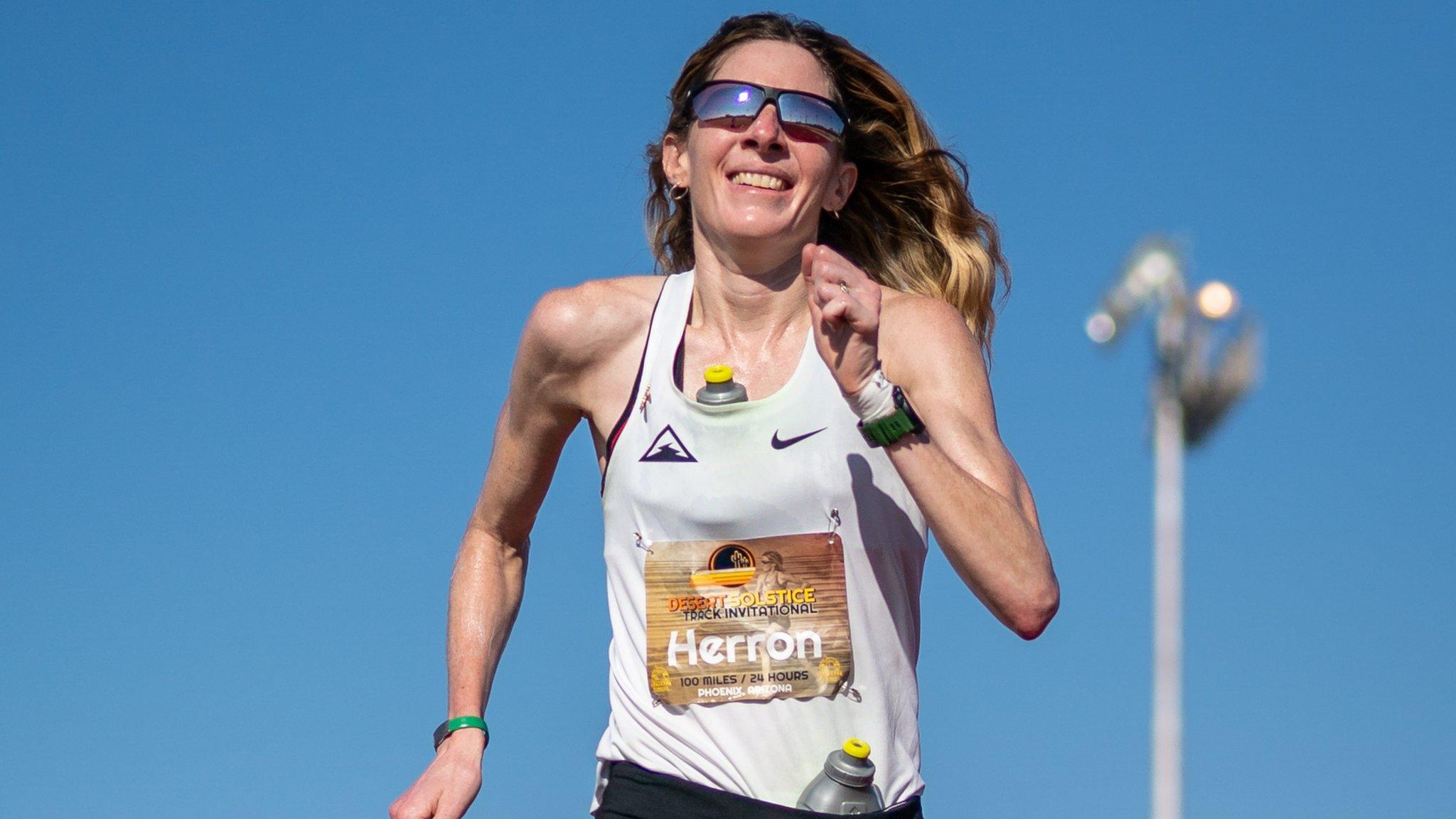Are women better ultra-endurance athletes than men?
- Published
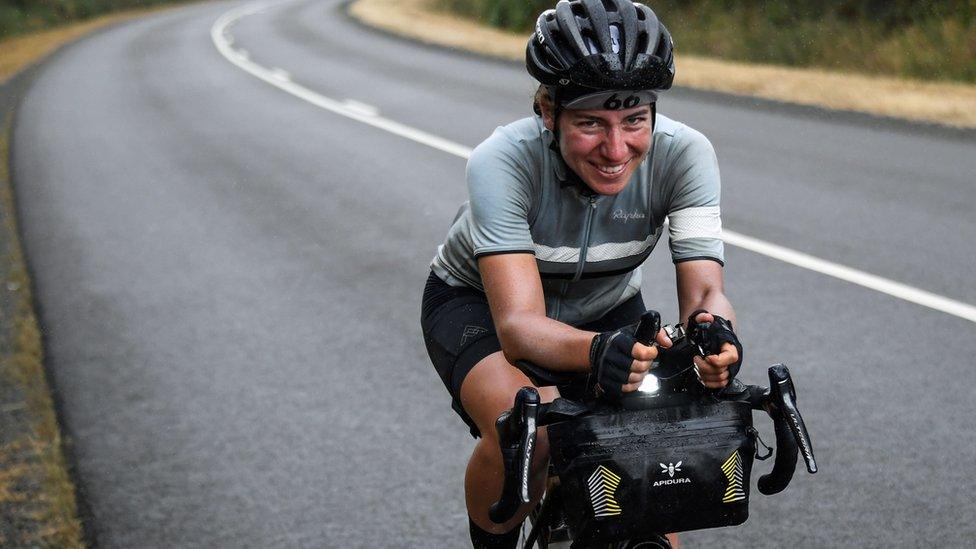
Fiona Kolbinger: "I never thought I could win the whole race"
Through thunderstorms, scorching heat and icy rain, Fiona Kolbinger cycled 2,485 miles (3,999km) in a little more than 10 days over some of Europe's most demanding terrain.
In doing so, the German cyclist became the first woman to win the Transcontinental Race this week. That in itself was remarkable: it was the first time she had formally competed in an ultra-cycling event.
But what was all the more remarkable was the fact she finished the brutal journey from Bulgaria to France a full 10 hours ahead of her closest opponent.
"I am so, so surprised to win," she said. "When I was coming into the race I thought that maybe I could go for the women's podium, but I never thought I could win the whole race."
Perhaps she should not have been so surprised: her result is one of a number of wins racked up by female ultra-endurance athletes in recent years.
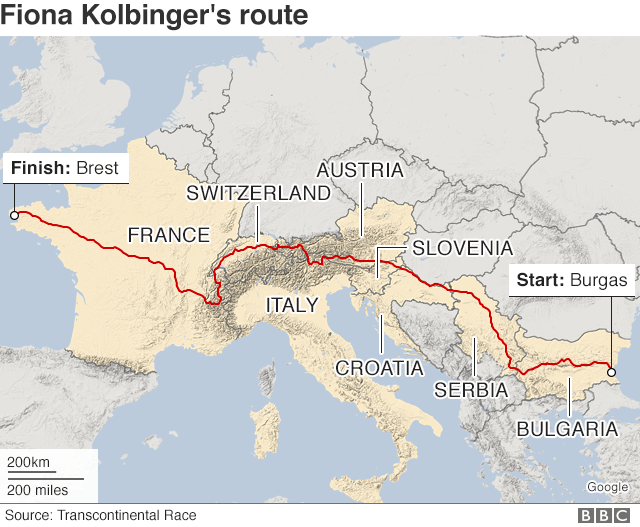
In January, British ultra-runner Jasmin Paris became the first woman to win the 268-mile Montane Spine Race in the UK, finishing the course in 83 hours, 12 minutes and 23 seconds, smashing the course record by 12 hours. And that included time to express breast milk along the way.
And in May, British junior doctor Katie Wright beat 40 men and six other women to win the Riverhead Backyard ReLaps Ultra-marathon in New Zealand, running almost non-stop for 30 hours.
Is this a sign women are better at ultra-endurance events? And if so, why?
Jasmin Paris broke the Spine Race course record by more than 12 hours
In general, women have a greater distribution of slow twitch muscle fibres, said Dr Nicholas Tiller, a senior lecturer in applied physiology at Sheffield Hallam University. These muscle fibres are more resistant to fatigue and more suited to endurance.
He said that men still tended to have bigger muscles and greater maximal capacities like strength and aerobic power, which is why women generally can't compete with men over shorter distances like a marathon.
This year's London marathon was won by Eliud Eliud Kipchoge who finished the course in two hours, two minutes and 38 seconds. Brigid Kosgei, who won the women's race, took 16 minutes longer.
"One of the reasons why women tend to be able to compete with men and sometimes outperform them, is that the greater maximal capacities exhibited by men aren't as important in an ultra-endurance event," Dr Tiller, who is also an ultra-marathon runner, said.
He said that in ultra-endurance races, athletes are never working close to their maximum capacity. It is much more about peripheral conditioning, oxygen efficiency and mental toughness.
While women don't outperform men in endurance sport, ultra-endurance sports are much more closely contested, he said. "Ultra-marathons are the great equaliser," Dr Tiller said, "because there are no other sports where men and women can compete side by side in terms of physicality."
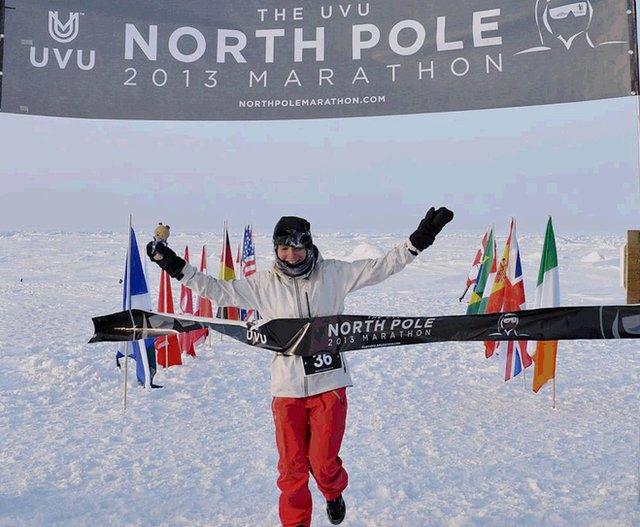
Fiona Oakes said women had a completely different psyche compared with men
The "longer the distance, the less of a gap between men and women," says Fiona Oakes, an ultra-marathon runner and holder of four world records.
"Certainly from when I've done races, women manage themselves in a completely different way," she told the BBC. She became aware of this while completing a marathon at the North Pole.
"It's a completely different psyche that the women have," she said. "During the North Pole race, a lot of the men tended to zoom off very quickly. Particularly in that race, it's imperative that you start at the pace you're going to finish in because if you don't and you slow down in the race, you're going to get hypothermia."
One of the reasons women could be performing well at ultra-endurance events is how they deal with emotions, said Dr Carla Meijen, a senior lecturer in applied sport psychology at St Mary's University in Twickenham.
She said: "When we think about ultra-endurance events, one of the things that's quite prevalent is emotions because you get fatigue, sleep deprivation and tiredness and that causes things like confusion and less helpful emotional responses.
"Typically females use more emotion-focused coping so they focus more on how to reframe what they are feeling than males in general. That might be a reason why they may be more suited to those more ultra-endurance events."
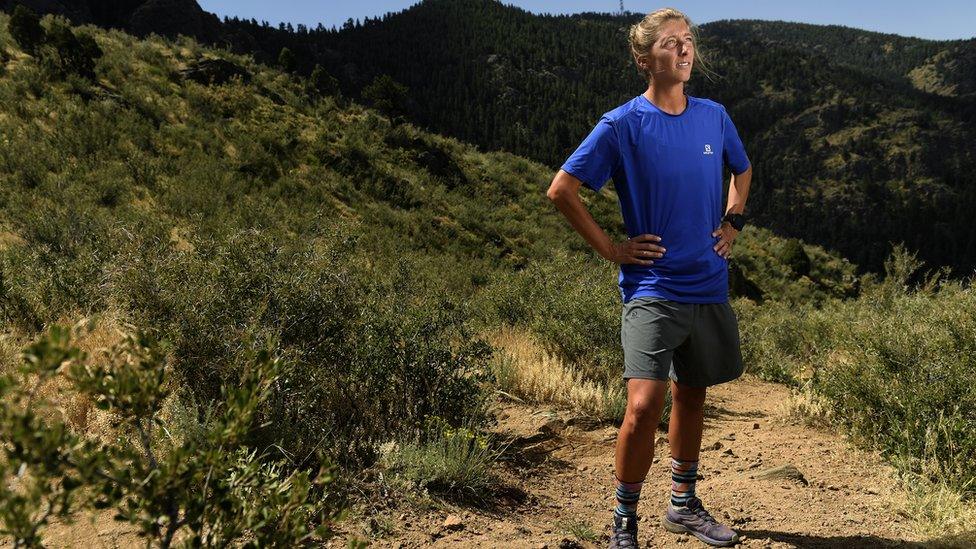
Courtney Dauwalter won the 238-mile MOAB race on just 21 minutes' sleep
When Jasmin Paris won the Montane Spine Race, she rested for only seven of the 83 hours, during which she had to sleep, eat and organise her kit. On the final section of the race, she started to hallucinate, thinking she could see animals appearing out of every rock. She kept forgetting what she was doing before remembering that she was taking part in the race.
In 2017, American ultra-marathon runner Courtney Dauwalter won the 238-mile MOAB race in under 58 hours. She did this on just 21 minutes' sleep.
In a separate 100 mile ultra-endurance race, she ran the final 12 miles in total blindness. It took five hours for her sight to completely return.
She told Trail Runner that she continued running, falling many times and finished the race with a bleeding gash on her head, external.
"I didn't fully process what was happening. In the moment, I was just thinking 'I'm in this race, I need to keep moving'," she told the magazine.
Dr Meijen said research she had conducted alongside Paul Anstiss and Professor Samuele Marcora from the University of Kent found that some female endurance athletes mentioned previous experiences such as childbirth helped them during races.
"Some female participants said events such as childbirth had helped them to deal with the pain and meant they had more belief in themselves so that they could push through the pain," Dr Meijen said. "When you think about ultra-endurance, it is a very painful experience."
However she said there was very little research on female athletes versus male athletes as "a lot of research did not compare them".
There are not enough sample sizes to determine whether women are better ultra-endurance athletes than men, said Dr Bryce Carlson, an ultra-marathon runner and the first American to complete the 2,000-mile (3,218km) North Atlantic west-to-east-solo row.
"In some years, a woman can win outright," he said. "When that happens, it's a really small sample size, where you have an elite female runner who has trained really hard and well and has great skill in the sport, and the competition in the men's sport might not be that high."

The Marathon des Sables in one of the most famous endurance races where athletes run more than 156 miles (250km) in just six days
He said that ultra-endurance runner Ann Trason was breaking records and beating men in ultra-endurance marathons in the late 1980s until 2004.
She held the title of ultra-runner of the year for more than a decade and broke 20 world records in distances ranging from 40 to 100 miles. Her performance sparked debate on whether women would begin to consistently beat men in ultra-endurance sports.
Dr Carlson said: "There was a lot of discussion that time whether you did longer and longer distances, whether the female/male strength gap closes to the point where women and men are competing on an equal footing."
Thirty years on from that debate, he said, more and more women were competing in ultra-endurance events, but men still generally outperformed women.
This ultra-runner went viral after breastfeeding her baby in the middle of the race
Fiona Oakes, the ultra-endurance runner, noted that women "haven't been in these events for that long" but that nowadays women were "improving so much quicker than the men".
"When I did the Marathon de Sables, there weren't that many women even competing in the race, now they're getting up into the top 20 alongside the men in these ultra-endurance races.
"Women are actually going out there and beating the men. We're going to see it much more often. They're finding their feet with ultra-events and you will see many more women rising to the top."
- Attribution
- Published6 August 2019
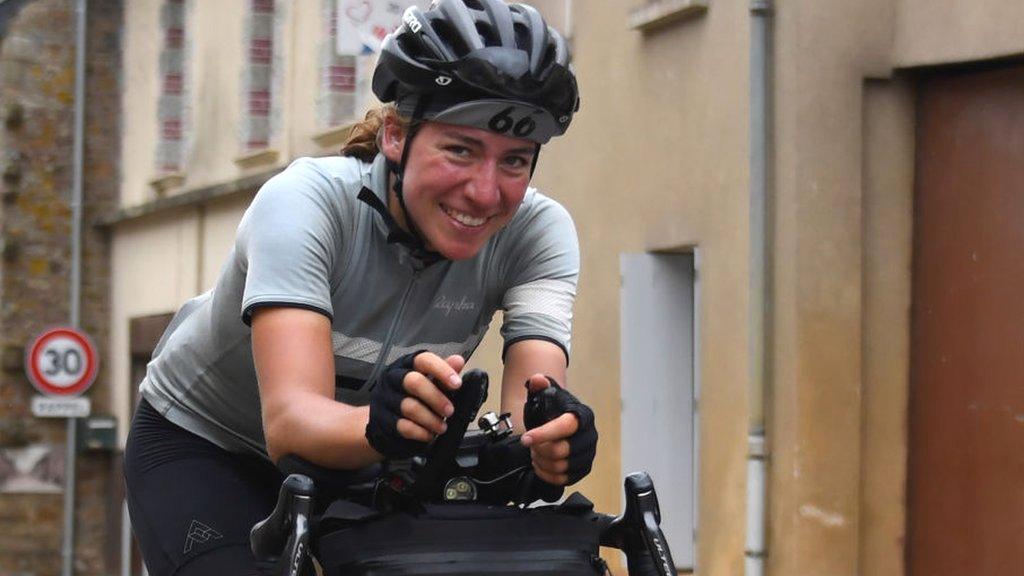
- Attribution
- Published25 December 2018
